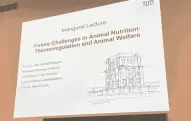Mutant combines British and Indian traits
The government of Vietnam announced over the weekend that a new variant of the coronavirus had been discovered in the country. Health Minister Nguyen Thanh Long said the new variant has characteristics of both the British and Indian forms, according to state media reports. It is very easily transmitted, especially through the air, he said."Unfortunately, little is known about this variant," Richard Neher of the Biozentrum at the University of Basel told the Daily Mirror. Based on the characteristics reported so far, he sees "no reason for concern yet."
According to the newspaper VnExpress, initial genetic analyses showed that the spike protein of the Vietnamese variant is very similar to that of the B.1.617.2 variant first detected in India. However, it also has an additional mutation, Y144, which is also present in a similar form in the B.1.1.7. variant first detected in the United Kingdom. Whether this mutation arose newly and coincidentally at the same position in the viral genome or by a combination of viral genomes from the Indian and British variants in dually infected patients is an open question.The variants that have circulated so far are assumed to have accumulated mutation after mutation in the course of their multiplication and spread, thus acquiring properties that enabled them to prevail over the originally spread variants. Such mutations occur when the genetic material for new viruses is copied millions of times. The vast majority do not alter the properties of the virus, but some can make the virus easier to transmit or make people more likely to become severely ill.The British variant B.1.1.7, which is now the predominant variant in Germany as well, is more easily transmissible from person to person than previously circulating variants because of its mutations. There is also evidence that more infected people die as a result of the disease, regardless of their age.
The Y144 mutation of the British variant, which has now also been found in the Vietnamese variant, causes the spike protein to lack an amino acid component. This changes the shape of the protein that the viruses use to enter the cells. It is also possible that the immune system's antibodies no longer bind this altered spike protein. People who have undergone an infection with a more original variant, or who have been immunized with a more original variant of the spike protein, could then be less well protected against infection with the Vietnamese variant.It is possible that the Indian variant B.1.617.2, which is also circulating in Vietnam, acquired this trait through another mutation. However, it could also have arisen through recombination: the mixing of the Indian variant with the British variant.
Such recombination has been observed in infected individuals in the United Kingdom by the research team led by Ben Jackson of the UK's University of Edinburgh and the COVID-19 Genomics UK scientific consortium. They discovered variants of the virus that have some, but not all, of the characteristics of the UK variant, and suspect that entire genomic segments of these virus types have been taken over by other variants. This is possible when a human cell is infected by two different viral variants and mixed forms are created during the production of new viruses.The British variant was first identified in Vietnam in December. The Indian variant has also already been detected. It is therefore conceivable that the new variant has arisen through recombination. One argument against this is that there have been few opportunities for the variants to come together: As of Sunday, only 7107 of Vietnam's approximately 100 million inhabitants had been infected.
Image by Gerd Altmann










































